Review by Pete Vack
Even after all these years the site of an Alfa Romeo 1600 GTA can get one’s heart pounding. It was arguably the ultimate street Alfa of the 60s, and unlike the GTZ 1 or 2, the GT Alleggerita somehow seemed within reach. But it really wasn’t, for they were too few, too wanted, too expensive and too raced. Which made us want one even more.
Following the long-lived Sprint, the GT of 1963 was one of Giugiaro’s finest designs, and the aluminum body and larger tires of the GTA made it more pleasingly muscular, perfecting what most thought could not be perfected. The 1600, in this author’s opinion, was the most pleasant of the entire DOHC four-cylinder Alfa engines; the 1300 too small, the 2000 too big and the 1750 nice but usually fuel injected. Topping it off with a twin plug head was the final stroke of genius. The GTA had it all.
Vladimir Pajevic’s new book, Alfa Romeo GTA, brings back memories of desire on no uncertain terms. Page after page we are given colorful reasons why we lusted after the GTA, and in doing so Pajevic shows us the many ways in which the GTA was different than the stock GT or GTV. He includes a list of serial numbers for the GTA run and indicates left and right hand drive variations as well as the serial numbers of the cars which were selected to be Corsa models.
Don Black, who prepared the Alfa Competition Reference Handbook while working for Alfa in the 1960s, had this to say about the book: “It is my kind of publication, loaded with facts, and no mythology; a highly detailed compendium, suitable for professional scholars. The quality of the photos, the depth of details, and superb visual support of technical statements makes it an excellent reference for professional restorers. The contents are a great tool to determine exactly how complete the details are, or if there are new original parts, and importantly how much of the vehicle has been changed by use of ‘improved’ non original or modified components. As highly desired collectible vehicles, potential buyers will now have some basis for determining the seller’s claims of ‘originality.’ The sharpness and clarity of the photos permit a very detailed comparison of certain parts that normally are difficult to photograph.”
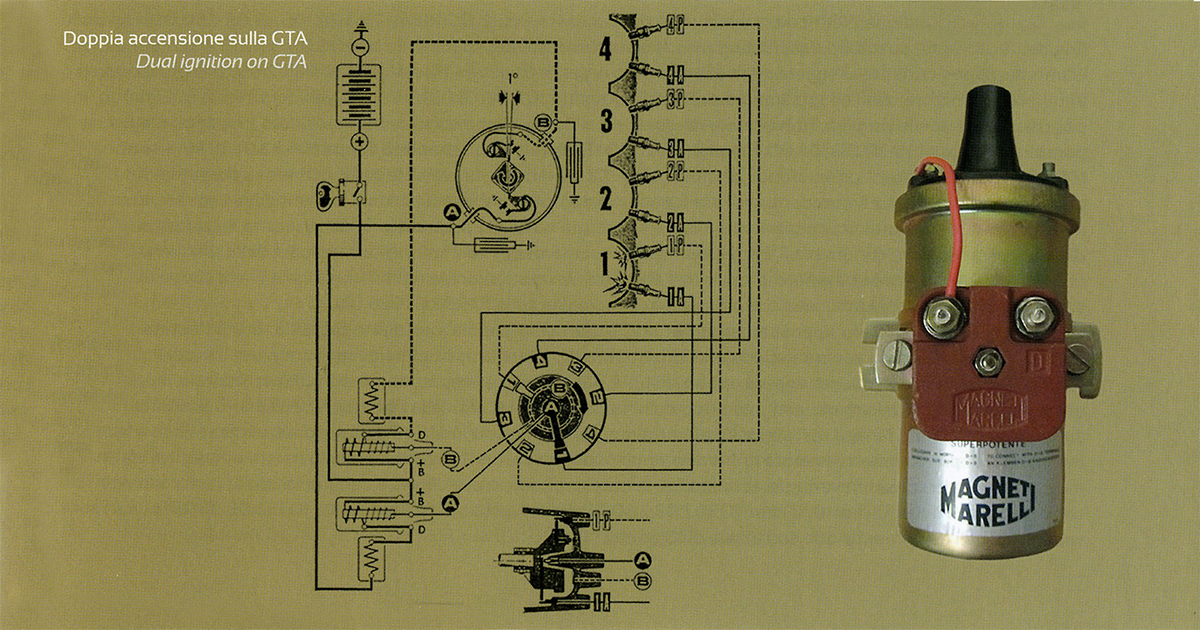
The electrical diagram illustrated how the twin plug head got its twin spark from the special distributor.
Chapters
Critical information comes right up on the menu. First chapter; how to recognize the GTA, a bit of the history and how to spot the visual differences between the GT and GTA. The next chapter delves into exactly how and where the GTA was lightened, an enlightening chapter indeed. Then, the means by which one can identify the car via the serial numbers, placement of tags and stamps etc.
A nice addition was the inclusion of an all-too-brief chapter about the rare and undeveloped SA, or supercharged GTA, is of particular interest. From what I can understand, a pump driven off the crankshaft delivered high pressure oil to two coaxial turbines with two centrifugal compressors which in turn fed compressed air into the Webers via an airtight box. It boosted the power of the 1600 GTA from 164 to 220-240 hp. This created one fast but hard to manage GTA. Probably no more were ten GTA SAs were built and most were converted back to ‘normal’ GTA specs.
Pajevic brings in noted GTA driver Gian Luigi Picchi to describe driving a GTA at Monza, one of the car’s favorite and most often used venues. This gives us an insight as to what the GTA meant to drivers at the time, and today. To drive one at its limit requires a great deal of concentration, not perhaps as chuckable as one might image. After Chiti was finished with the standard GTA Stradale, it was a pure competition machine and behaved like one.
Another interesting section of the book details several of the race teams responsible for the full race GTAs; Chiti’s Autodelta of course, but there is a brief bio of Conrero, Monzeglio in Turin, and Angelini in Rome.
The book focuses on the 1600 GTA, so don’t expect anything on the 1300 GTA or the various GTams. This is a slim volume and dedicated to the most famous and pure of the 1600 series. I asked the author if more would follow: “I think (in this very moment) that the book about 1600 GTA will be the only one with my signature. It is a kind of a tribute to the car that was my first ‘true’ love on four wheels, and bought with touch of luck, also was my ticket to the wonderful world of racing and its fairy tales.” He commented that the 1300 story was pretty complicated, and that the GT am didn’t quite match the magic of the original 1600 GTAs.
The layout and graphics are superb and the text, in both Italian and English, is laid out in a logical fashion and easy to read. The translation could be better, but in terms of the many and difficult technical descriptions is pretty faultless. A very welcome addition to the Alfa library; the topic and price is right, don’t hesitate to order.
Alfa Romeo GTA
Authors: Vladimir Pajevic, Gian Luigi Picchi
Edizioni ASI Service srl Torino 2020 www.asiservice.it
Hardcover, 140 Pages, color photos 28€ in Italy for printed version
ISBN-10: 8898344716, ISBN-13: 9788898344710.
The e-book edition will be available from March 24, 2020 The book can be ordered also by Libreria dell’Automobile, Feltrinelli or other major book sellers in Italy.
US Customers: The book can be ordered from our friends at Autobooks-Aerobooks
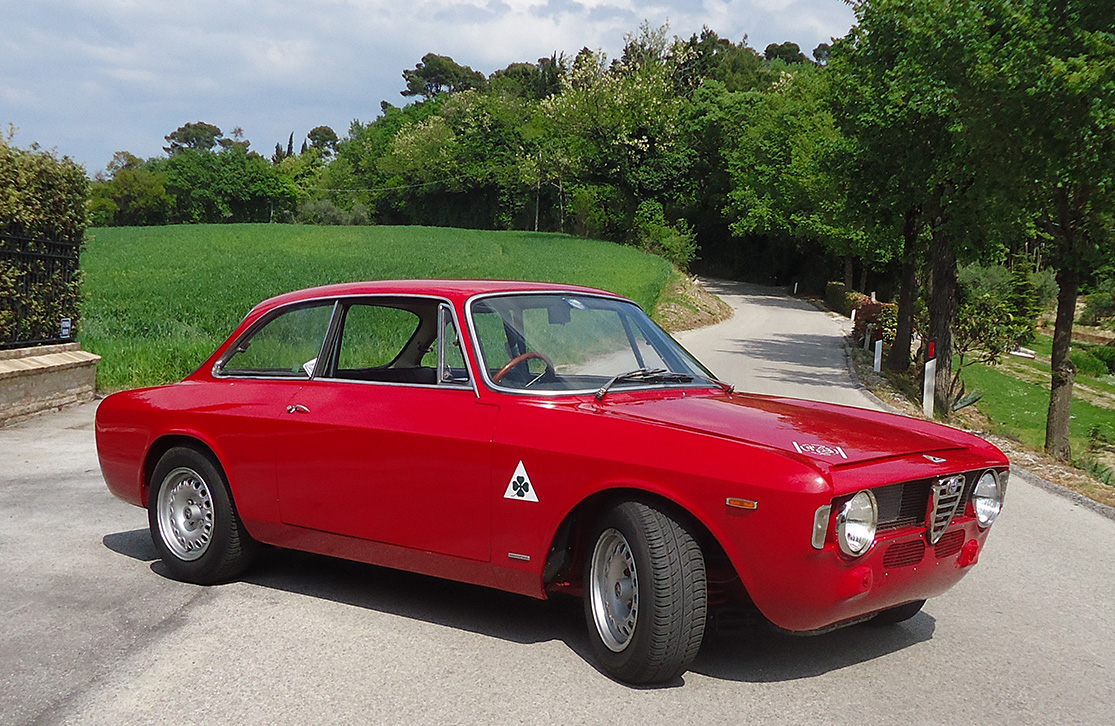
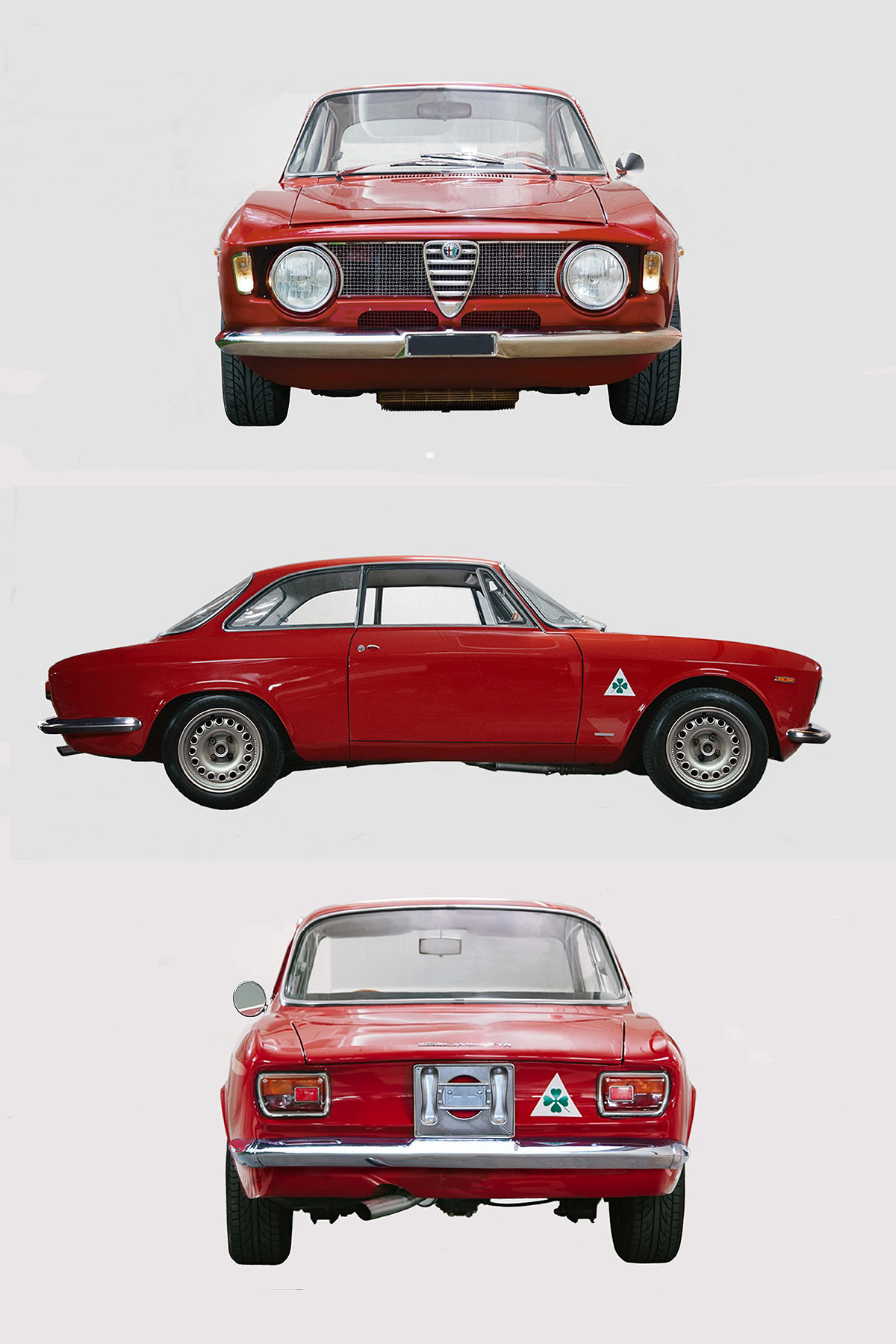
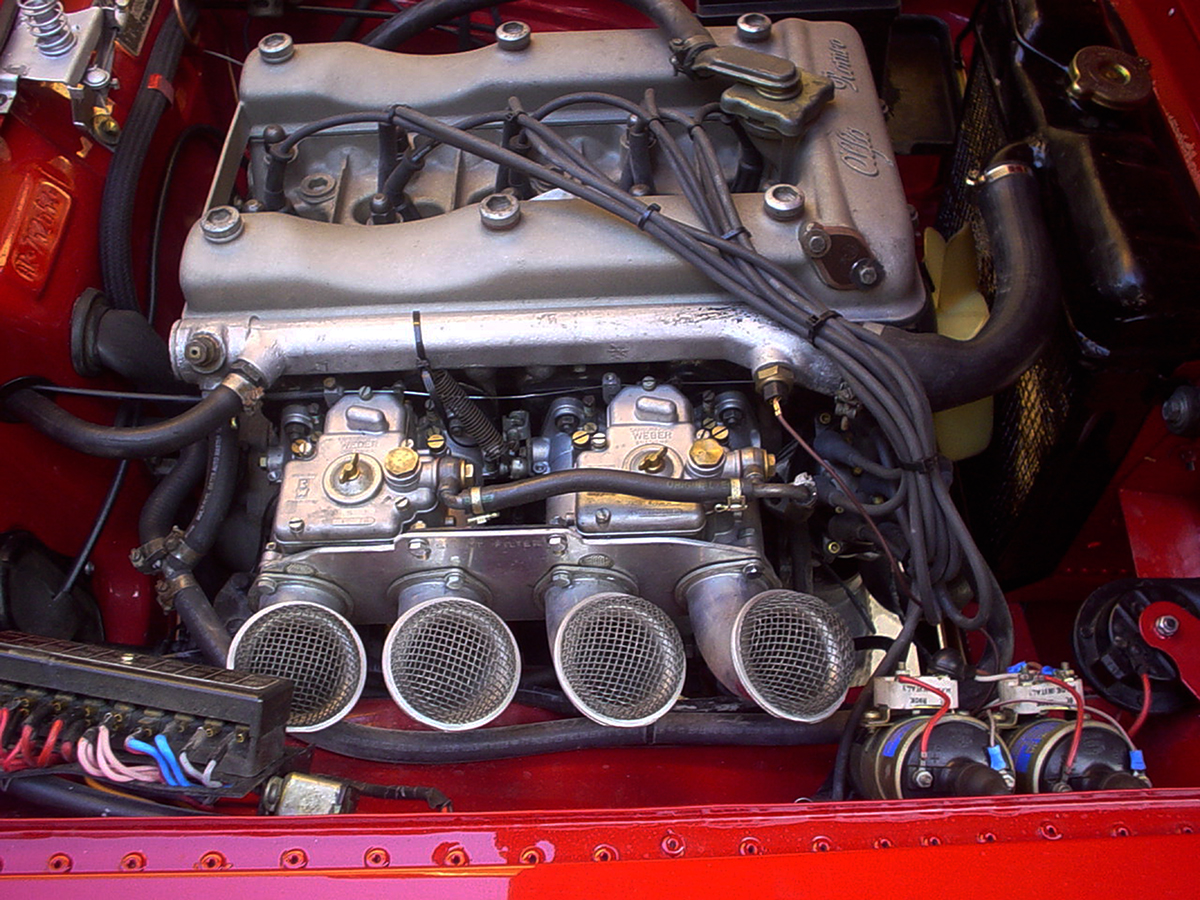
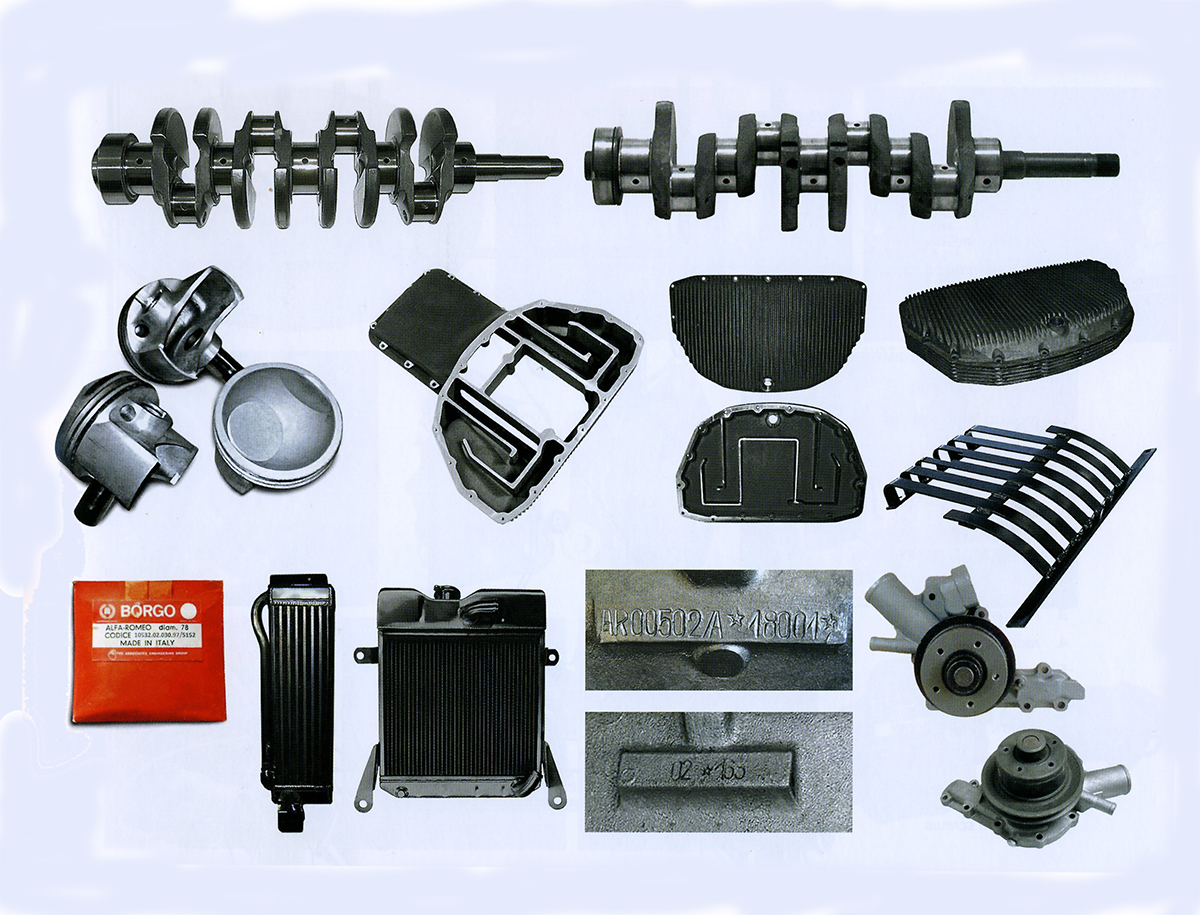
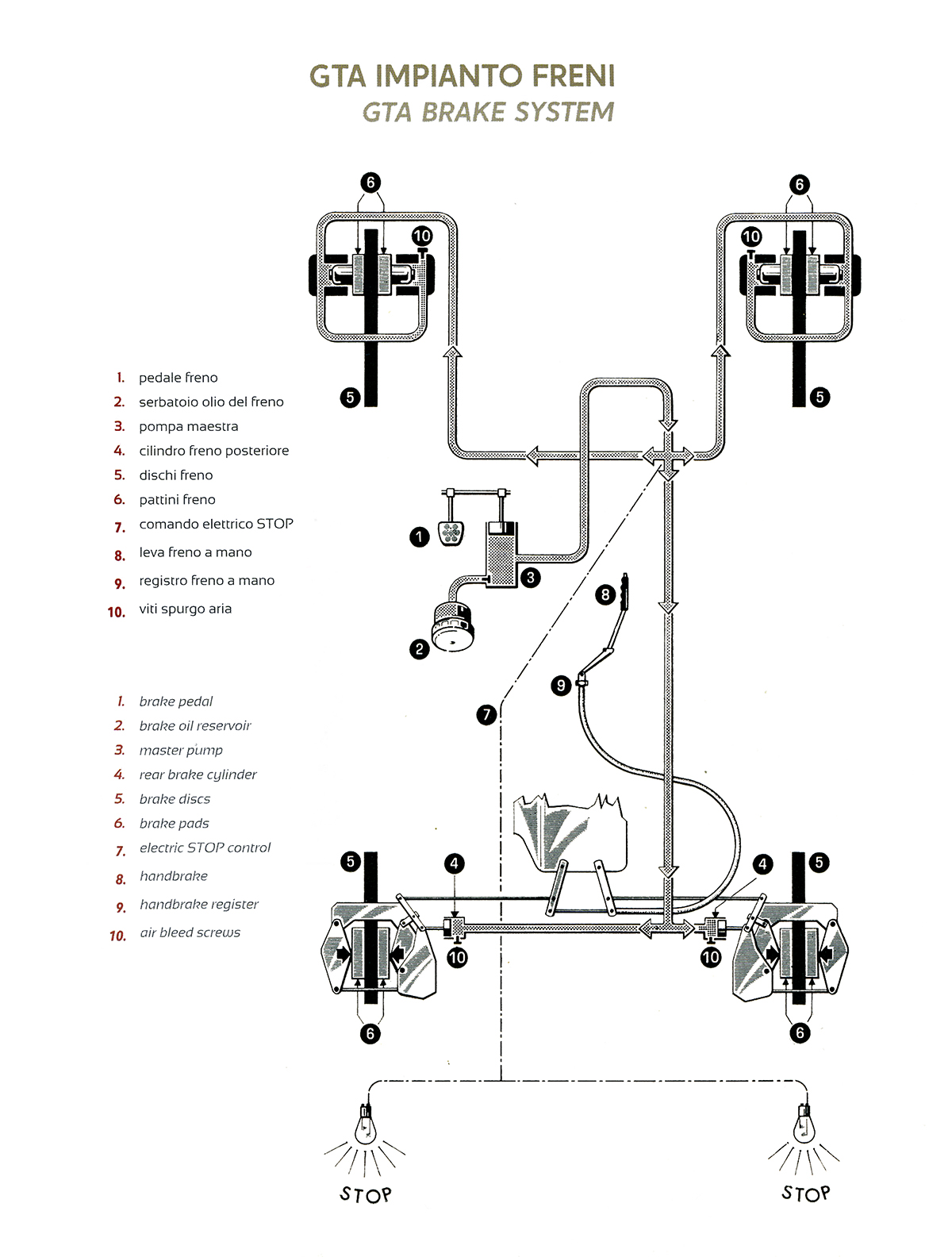
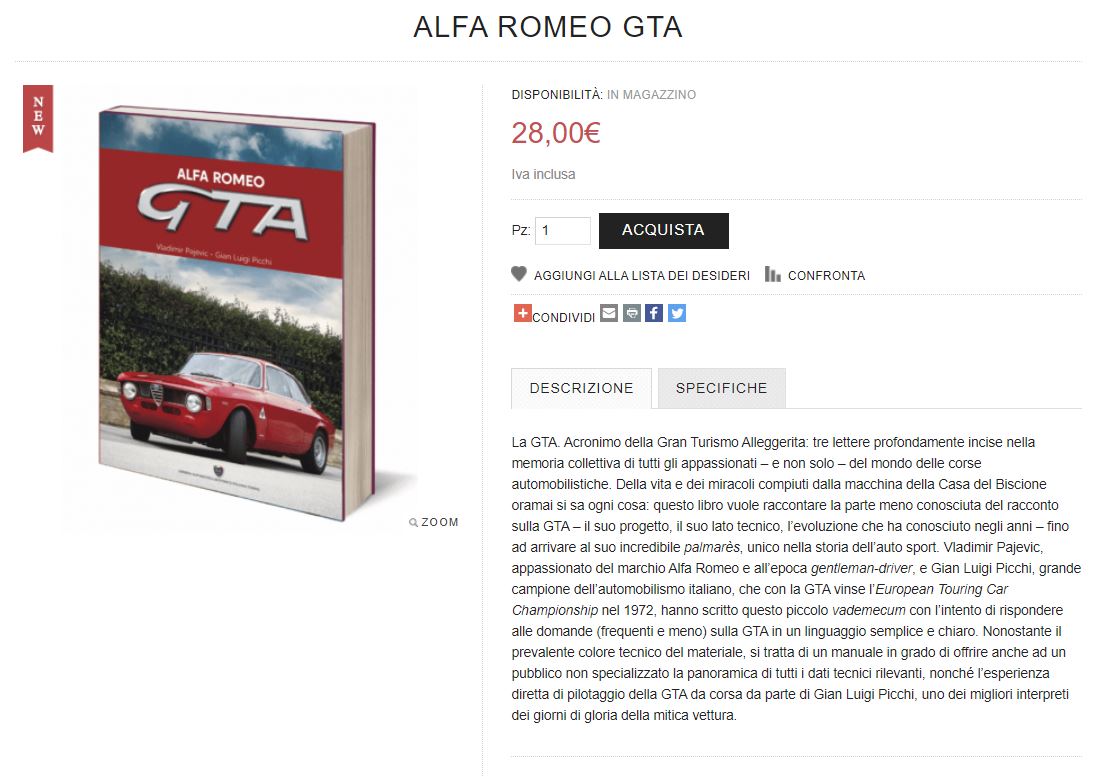
Went to the web site above and found it had only Italia. Struggled through the order using Google translate only to find that it could not calculate shipping to me. There was also a required 16 digit number that I may have defeted with 16 9s.
So I sent and email and the reply directed me to autobooks-aerobooks in California where I could not find it on their web site. Another email to autobooks-aerobooks got me a link as follows:
https://www.autobooks-aerobooks.com/product/alfa-romeo-gta/
There it is available for $59.95 US plus shipping.
Hope this helps someone.
Thanks Ken and we have added the Autobooks link to the article.
Pete